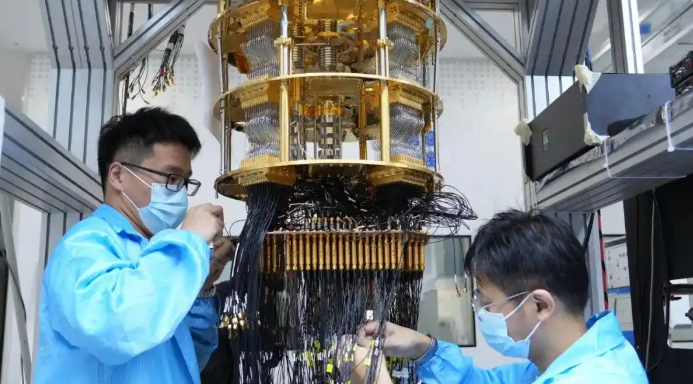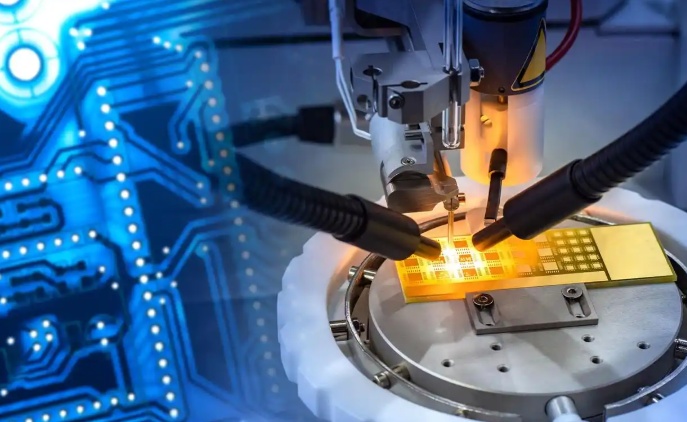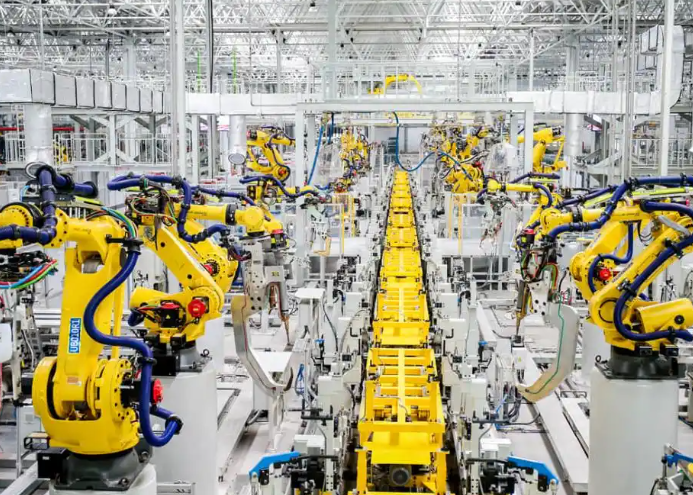On April 7th, according to the Anhui Quantum Computing Engineering Research Center, the research team successfully carried out the world's first operation of fine-tuning an AI large model with a billion-level number of parameters, on China's superconducting quantum computer "Benyuan Wukong".
As experimental results showed, on the premise of reducing the number of parameters by 76%, the training effect has instead increased by 8.4%. This achievement not only verifies the feasibility of quantum computing in helping to achieve the lightweighting of large models, but also opens up a new path for solving the "computing power anxiety" of large models.

The team of Peking University have made a breakthrough in developing the world's first bismuth-based two-dimensional chip. It is 40% faster and 10% more energy-efficient than the latest 3-nanometer chips from Intel and TSMC, achieving "overtaking on a different track". This transistor uses BiOSe material, with an electron mobility as high as 280 cm?Vs and an operating voltage of only 0.5 volts. This epoch-making achievement was published in Nature Materials on February 14th and is hailed as "the fastest and lowest-energy-consuming transistor to date". It may put an end to the silicon era and reshape the global semiconductor landscape.

On April 8, the "Snow Dragon", a polar research icebreaker, returned to Shanghai, and the 41st Chinese Antarctic Expedition successfully completed its main tasks. This is the second time that China has carried out a three - ship segmented expedition in Antarctica.
The "Snow Dragon" set sail from Guangzhou on November 1, 2024. It successively arrived at Zhongshan Station and Great Wall Station in Antarctica, made three stops at outer ports for supplies and crew rotation, and crossed the westerlies four times. It carried out scientific investigations in the Southern Ocean in three marine operation areas, namely the Antarctic Peninsula operation area, the Astronaut Ocean operation area, and the Prydz Bay operation area. The expedition lasted 159 days with a total voyage of more than 27,000 nautical miles.

The global pre - sale of the 2025 Xpeng X9 has been launched. It can accelerate from 0 to 100 km/h in 5.7 seconds. With a 10 - minute charge, the cruising range can be increased by 300 km, and the maximum CLTC range reaches 740 km. The zero - gravity space - sofa can automatically adjust its angle, and the third row can be transformed into a 1.8 - meter - wide double bed in seconds. The five - zone air - conditioning system and 23 - speaker audio system create a mobile concert hall. The 20 - inch Star - Shining Suspension Wheels adopt the same dynamic fixed - axis suspension technology as Rolls - Royce, and are equipped with Michelin silent tires, which enhance both the visual effect and the quietness.

Great Wall Motor has signed a strategic cooperation agreement with Hangzhou Unitree Robotics. The two sides will cooperate in areas such as robotics technology and intelligent manufacturing, including but not limited to humanoid robotics technology, quadruped robotics technology, development of robot - body software and hardware, intelligent control systems, and intelligent spaces.
According to Great Wall Motor, this cooperation will focus on three major directions: underlying technology of embodied intelligence, innovation of "vehicle + robot" scenarios, and upgrade of vehicle manufacturing. The first - phase cooperation will center on the integration of "off - road vehicles + robotic dogs" to explore scenarios such as equipment transportation and adventure - companionship.
